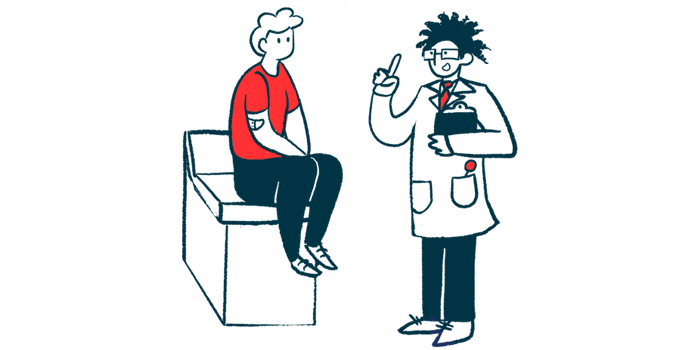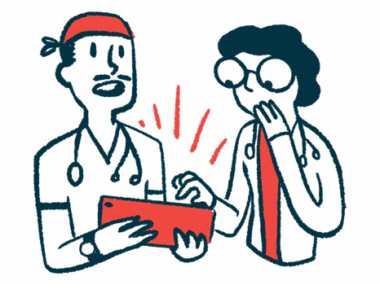UVA1 Phototherapy Appears to Ease Lesions in Localized Scleroderma
Written by |

UVA1 phototherapy, a form of treatment that uses light for skin disorders, helps ease skin lesions in people with localized scleroderma by regulating certain genes responsible for inflammation and scarring, a study has found.
The study, “Clinical and laboratory characterization of patients with localized scleroderma and response to UVA-1 phototherapy: In vivo and in vitro skin models,” was published in the journal Photodermatology, Photoimmunology & Photomedicine.
Localized scleroderma affects the skin, causing it to harden and tighten. Treatment may include the use of phototherapy at specific wavelengths of light. UVA1 — which is restricted to light of a narrow band of wavelengths (340–400nm) within the ultraviolet spectrum — penetrates deep into the skin.
Previous research has shown that UVA1 phototherapy may benefit patients with localized scleroderma, but the exact mechanisms remain unclear.
To delve deeper into the molecular changes occurring in response to UVA1 phototherapy, a team of researchers in Italy used lab-grown fibroblasts from the skin of patients with localized scleroderma.
The study included 16 patients (10 female and six male) who received whole-body UVA1 phototherapy using a medium dose of 60 Joules per square centimeter of skin (J/cm2) for a course of 36 sessions, done three to four times per week. Their average age was 55 years, and they ranged from 16 to 70 years old. Their skin lesions had started to develop two months, on average, before they entered the study.
Eight of the patients, who had fair skin that can burn easily, also received three sessions of low-dose UVA1 phototherapy (30 J/cm2) to prepare the skin for the medium dose.
At study entry (baseline), Localized Scleroderma Assessment Tool (LoSCAT; used to evaluate disease activity) and Dermatology Life Quality Index (DLQI) scores were collected, and measurements of skin thickness were performed using high-frequency ultrasound. These measurements also were performed during and after the course of UVA1 phototherapy.
The average LoSCAT score decreased (improved) from 33.4 at baseline to 9.3 at nine months after the last phototherapy session, and the average DLQI score decreased from 4.6 at baseline to 0.8 at six months.
A skin pinching test revealed an increase in skin elasticity starting at two months after the last UVA1 phototherapy session. Skin thickness started to decrease one month after the last session, then by up to 60% within nine months.
Skin thickness is usually assessed for the first time not earlier than three months after the last UVA1 phototherapy session, the researchers noted.
To look deeper into the fibroblasts of the affected skin, the researchers ordered a biopsy of the skin lesions at baseline and at three months after the last phototherapy session. The fibroblasts were placed under UVA1 radiation at four different doses and exposure duration. Then, the scientists measured how many fibroblasts remained alive for up to three days. They found that longer UVA1 radiation duration and higher doses did not lead to greater fibroblast death.
Next, the fibroblasts were used in another experiment to see which genes were switched “on” and “off” by UVA1 phototherapy. The researchers found changes in 12 out of 21 genes tested between patient-derived fibroblasts and healthy (control) fibroblasts.
Genes whose activity decreased provide instructions for molecules involved in inflammation and fibrosis (scarring). In contrast, some genes with greater activity are involved in anti-fibrotic signaling pathways.
“UVA-1 phototherapy adds significant benefits in local tissue remodelling, rebalancing the alteration between pro-fibrotic and anti-fibrotic pathways; these changes can be well monitored by [high-frequency ultrasound],” the researchers concluded, adding that further study is needed to confirm their findings.







